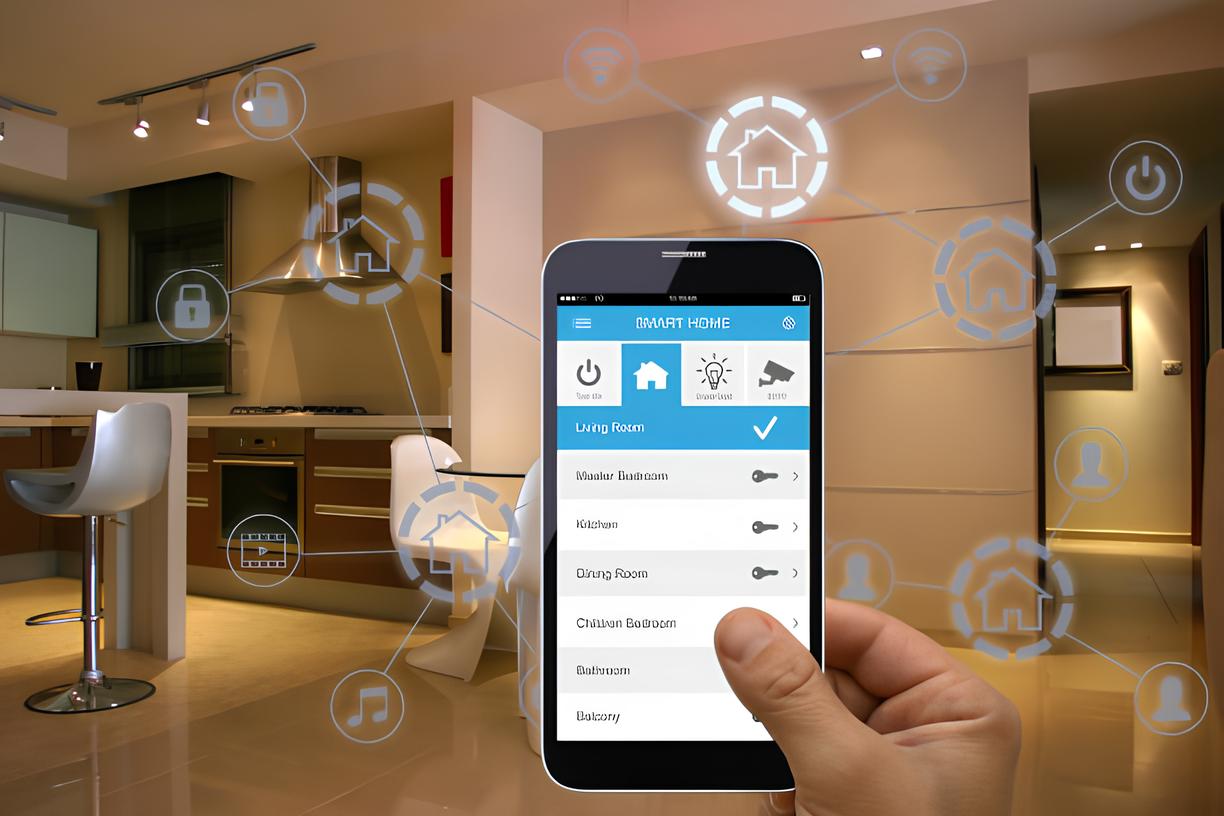Dimmer switches hold great appeal for LED light users, offering customizable lighting to fit our moods and activities. But many are taken aback by their high cost, particularly when compared to standard switches. This raises the question: "Why are dimmer switches so expensive?" Let's explore this further.

TABLE OF CONTENTS
The Basics of Dimmer Switch Technology
- How Traditional Dimmer Switches Work
- The Evolution of Dimmer Switches with the Rise of LED Technology
In essence, traditional dimmer switches manipulate the power supply to a light source, altering its brightness. They accomplish this by interrupting the power flow to the light source at a rapid rate, a process known as "phase-cutting". This on-and-off cycle occurs dozens, if not hundreds, of times per second, creating the illusion of a steady but dimmer light. Our eyes aren't capable of catching these rapid interruptions, so we perceive a continuous light that's less bright.
This technique worked well with incandescent or halogen bulbs, as they rely on heating a filament to produce light, and reducing the power supply effectively dims the light produced. However, this method is not entirely suitable for LEDs, leading to the development of more specialized and advanced dimmer switches for LED lights.
As we ventured into the era of LED lights, the landscape of dimming technology underwent significant changes. Unlike traditional incandescent or halogen bulbs, LEDs operate differently. They are essentially semiconductor devices that emit light when current flows through them, a process known as electroluminescence.
This fundamental difference in operation led to complications with traditional dimmer switches. For example, LED lights sometimes flicker or don't dim smoothly when used with traditional dimmers. In response, the industry developed specialized LED dimmer switches. These switches can manage the lower power requirements and different electrical characteristics of LED bulbs without causing unwanted flickering or inconsistent dimming.
Smart dimmer switches represent another leap in this evolution, with advanced electronics that can integrate with home automation systems, offering users more control over their lighting settings. This progression in dimmer switch technology not only enhances user experience but also contributes to the increased cost, as we will discuss further in the following sections.

The Technicalities Behind Smart Dimmer Switches
- Introduction to Smart Dimmer Switches
- The Advanced Electronics Involved
- Integration Capabilities with Other Smart Devices
The lighting landscape has shifted yet again with the advent of smart dimmer switches. These are more than just light dimmers; they're a part of the broader Internet of Things (IoT) ecosystem, meaning they can connect to the internet, integrate with smart home systems, and be controlled remotely using your smartphone or smart home devices.
A smart dimmer switch gives you unprecedented control over your lighting. Imagine being able to adjust your lights without leaving your couch or even while you're away from home. You could program your lights to dim at specific times, or set routines that correspond to your daily activities, making your home lighting truly personalized.
Moreover, smart dimmer switches work exceptionally well with LEDs. They can handle the low power requirements and provide smooth, flicker-free dimming. Despite their higher upfront cost, they can lead to significant energy savings over time.
This technological advancement comes with increased manufacturing complexity, contributing to the higher price of smart dimmer switches compared to traditional switches.
The advent of smart dimmer switches has been driven by the advancement of electronic technologies. A smart dimmer switch involves several advanced components: microcontrollers for processing, Wi-Fi or Bluetooth modules for network connectivity, and sophisticated dimming circuits that work well with LEDs. These components allow smart dimmer switches to integrate with other devices in a smart home environment and offer precise, flicker-free dimming that's more sophisticated than traditional switches.
Moreover, the design and manufacture of these devices require a significant level of expertise and precision, including rigorous testing to ensure that they operate correctly under a variety of conditions and can seamlessly integrate with various home automation systems. These factors all contribute to the higher cost of smart dimmer switches compared to standard dimmer switches.
One of the primary benefits of smart dimmer switches is their ability to integrate seamlessly with other smart devices in your home. With their embedded Wi-Fi or Bluetooth capabilities, these switches can become a part of your broader smart home ecosystem. You can use your smartphone, tablet, or voice-controlled devices like Amazon Alexa or Google Home to control them. This means you can adjust your lighting levels without even needing to get up and manually flip a switch.
Additionally, their smart capabilities enable them to work with home automation systems, allowing you to program routines or schedules for your lights, or even integrating them with other devices. For instance, you could have your lights slowly dim as your smart thermostat lowers the temperature for bedtime, creating a perfectly relaxing atmosphere.
However, achieving this level of integration requires complex software and firmware design, which further contributes to the higher cost of smart dimmer switches.

LED Compatibility Challenges
- Differences in LED Dimming vs. Traditional Bulbs
- The Need for Specific Designs and Technology for LEDs
- Smart Dimmers and Their Compatibility Features
LED bulbs and traditional incandescent bulbs operate very differently, leading to variations in how they can be dimmed.
Traditional incandescent bulbs are dimmed by reducing the voltage or current, thereby lowering the light output. This is a relatively straightforward process because the relationship between the current and the light output is linear.
LEDs, on the other hand, are more complicated. They're digital devices that work on a principle called "pulse-width modulation". This means they flicker on and off at a high frequency to create the illusion of dimming. The dimming level is determined by the ratio of the "on" time to the "off" time.
Standard dimmer switches, designed for incandescent bulbs, often do not work properly with LEDs, leading to issues like flickering, buzzing, or not dimming correctly. Smart dimmer switches, on the other hand, are designed to work with the unique properties of LEDs, ensuring a smooth, flicker-free dimming experience.
Due to the unique operational characteristics of LEDs, a different design approach is needed when compared to traditional bulbs. Instead of just reducing the voltage or current, LED dimming requires a more advanced, sophisticated method, such as pulse-width modulation, to achieve a smooth and consistent dimming effect.
Moreover, the electronic drivers that power LEDs must be compatible with the dimmer switch, and vice versa. Therefore, not all dimmers are suitable for all LED lamps, leading to the need for specific designs and technology to ensure compatibility and functionality.
Smart dimmer switches are equipped with advanced circuitry and software that can interpret and respond to the unique power needs of LEDs. They are designed to provide a wide range of brightness levels without the problems of flickering or buzzing that can occur with standard dimmers. The development and implementation of these specific designs and technologies are part of what makes smart dimmer switches more expensive.
Smart dimmers stand out for their extensive compatibility features. Their advanced design allows them to work efficiently with a wide variety of LED bulbs, mitigating common problems such as flickering and humming. These dimmers can automatically adjust the power output to suit the specific requirements of different LEDs.
Additionally, smart dimmers can also communicate with other smart devices in a home automation system via Wi-Fi or Bluetooth. This means you can control your lighting from your smartphone, tablet, or even through voice commands, providing you with a convenient and seamless lighting experience.
However, the complex technology and software required to offer these compatibility features also contribute to the higher price point of smart dimmers.

The Long-term Benefits of Smart Dimmers
- Energy Savings
- Convenience and Remote Control Capabilities
- Integration with Smart Home Ecosystems
One of the key benefits of using smart dimmer switches, especially with LED lighting, is the potential for significant energy savings. By adjusting the brightness levels of your lights according to your needs and preferences, you can use less electricity compared to having your lights on at full brightness all the time.
LED bulbs already consume much less energy than traditional incandescent bulbs, and when paired with smart dimmers, they can be even more energy-efficient. This is because smart dimmers precisely control the power delivered to the LEDs, thereby reducing wasted energy.
Furthermore, many smart dimmers come with features such as scheduling or automatic adjustment based on ambient light conditions. This means the lights can be dimmed or turned off when they are not needed, further saving energy.
While smart dimmer switches might be more expensive upfront, the energy savings over time can offset this initial cost, making them a smart investment in the long run.
Smart dimmer switches offer unparalleled convenience when it comes to controlling your home lighting. They can be integrated into a smart home system and easily managed through an app on your smartphone or tablet. This means you can adjust your lights from anywhere in the world, as long as you have an internet connection.
Want to set the mood for a movie night while you're still at work? Just adjust the lighting settings from your phone. Need to dim the lights for your kid's bedtime but you're stuck in traffic? You can handle it remotely without any stress.
Furthermore, these smart devices are compatible with most popular digital assistants, such as Amazon's Alexa, Google Home, and Apple's Siri, allowing for voice-activated commands. This means you can control your lighting without even lifting a finger.
This level of convenience and the technology required to provide it is another factor contributing to the higher cost of smart dimmer switches.
Another compelling reason behind the popularity of smart dimmer switches is their ability to integrate seamlessly with a wide variety of smart home ecosystems. From Amazon Alexa and Google Home to Apple HomeKit and Samsung SmartThings, smart dimmers can usually connect and interact with these platforms to create a unified, intelligent home experience.
Once integrated, you can control your dimmer switches alongside other smart devices through one centralized app. This means you can coordinate your lighting with your security system, your thermostats, and even your smart appliances for greater efficiency and convenience.
Furthermore, with routines and automation, your lights can automatically adjust based on the time of day, your location, or even when certain events occur, like the opening of a door.
This integration doesn’t come easy, though. The advanced technology required to facilitate communication between these various smart devices and platforms is complex, and thus contributes to the higher cost of smart dimmer switches.

Conclusion
As we've seen, while smart dimmer switches may come with a higher initial cost, the value they offer in terms of convenience, performance, and energy savings can be well worth the investment for LED users. They integrate seamlessly with smart home ecosystems, providing the ability to control your lighting from anywhere, at any time, while also offering a smoother, flicker-free lighting experience.Moreover, the potential energy savings achieved by using smart dimmer switches, especially with LED lights, can offset the initial expense in the long run.Ultimately, it's essential for LED users to weigh the long-term benefits against the upfront costs. While the initial cost may seem daunting, the convenience, energy savings, and enhanced control over your lighting environment that smart dimmers provide can make them a worthwhile investment for the future.




Share:
Unraveling the Mystery: Do LED Lights Attract Spiders?
Step by Step: How to Remove Ceiling Light Cover no Screws